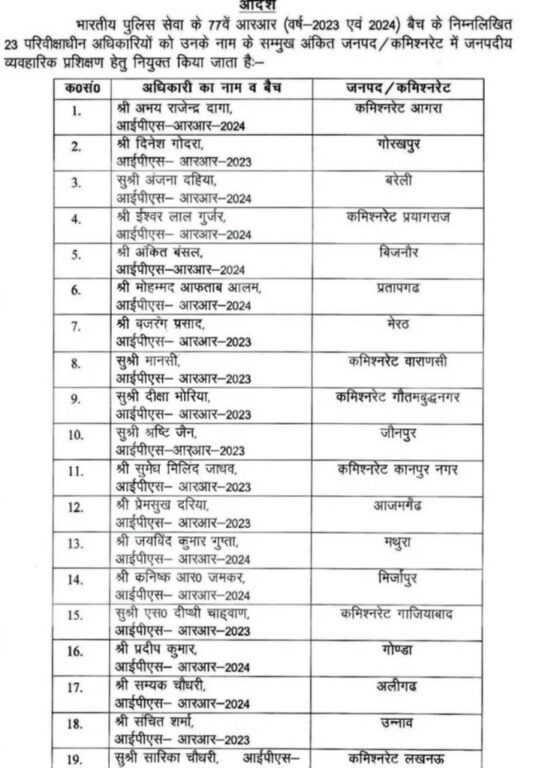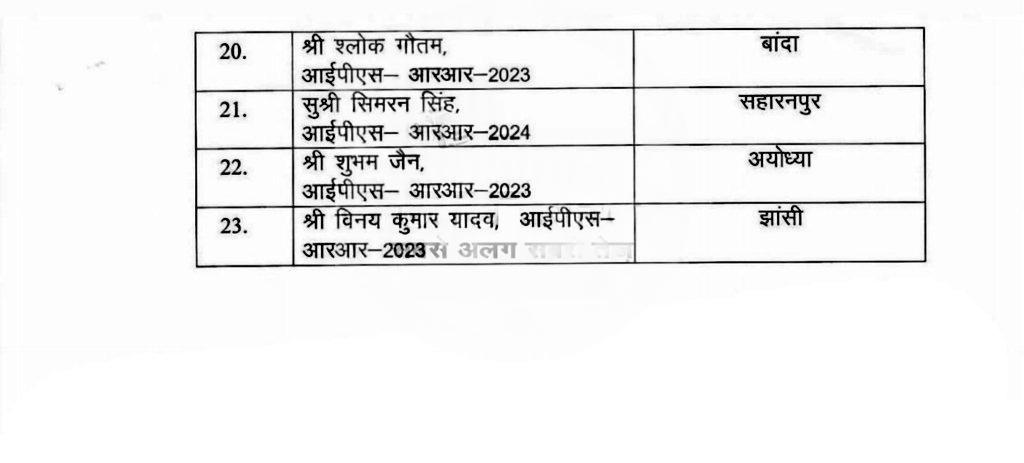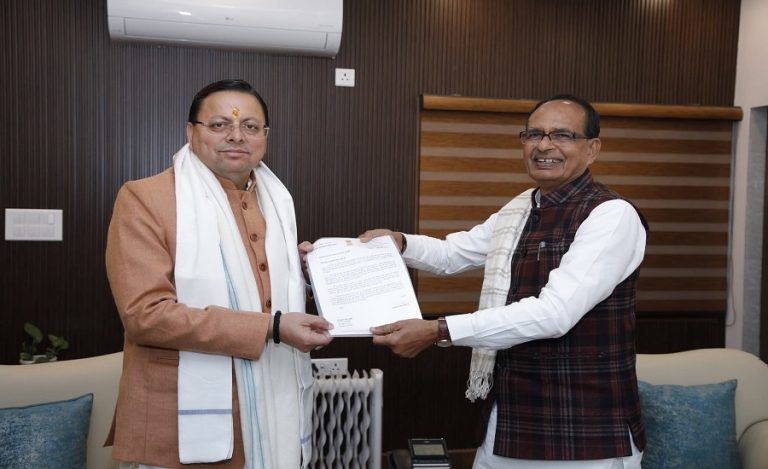Lucknow: In a major administrative step aimed at strengthening law and order, the Uttar Pradesh government has transferred 23 trainee IPS officers across various districts. These transfers involve officers from the 2023 and 2024 batches, who have now been assigned field postings as part of their three-month practical training module.
The official order, released on Wednesday, marks an important phase in grooming young IPS officers by exposing them to on-ground policing challenges and district-level responsibilities.
Government’s Objective: Better Policing & Policy Implementation
According to officials, the decision to deploy trainee IPS officers in districts is intended to help them:
- Understand real-time policing
- Strengthen district-level law and order
- Gain experience in public dealing, crime response, and field strategy
- Support administrative reforms through hands-on exposure
This move is seen as part of the government’s broader effort to enhance policing efficiency and accelerate reforms within the Home Department.
Read also: IPS Manav Verma Appointed SP in NIA; IAS Latha Ganapathy Prematurely Repatriated to Parent Cadre
Key Postings Announced
Among the newly posted trainee IPS officers, a few key assignments stand out –
- Abhay Rajendra Daga (IPS 2024 batch) – Posted to Commissionerate Agra
- Anjana Dahiya (IPS 2023 batch) – Posted to Gorakhpur
- Ishwar Lal Gurjar (IPS 2024 batch) – Posted to Commissionerate Prayagraj
- Ankit Bansal (IPS 2024 batch) – Posted to Bijnor
These officers will work under the supervision of senior police officials, enabling them to learn district-level functioning, crime control mechanisms, and public safety management.
Complete List of Posted Officers


Strengthening the Force Through Practical Exposure
The deployment of trainee IPS officers at such an early stage is expected to:
- Improve on-ground coordination
- Boost district policing capacities
- Prepare future officers with real-world experience
- Enhance the overall administrative output of the UP Police
Officials believe this strategic move will contribute significantly to building a stronger, more responsive law-enforcement structure in the state.



























